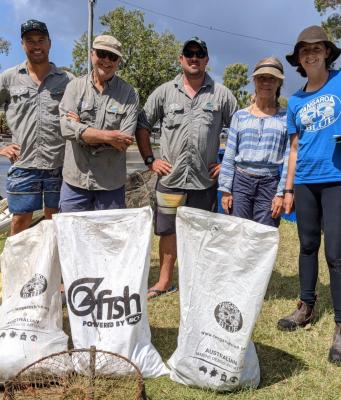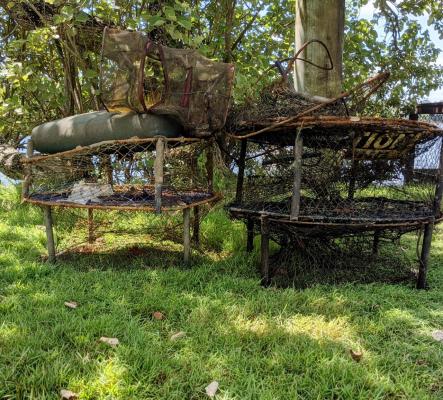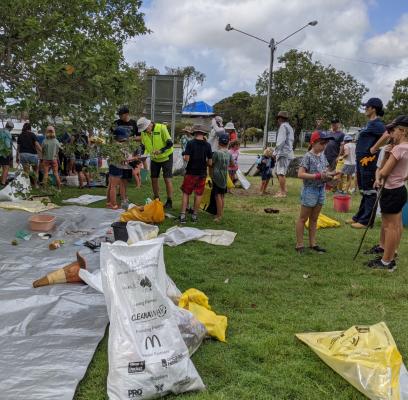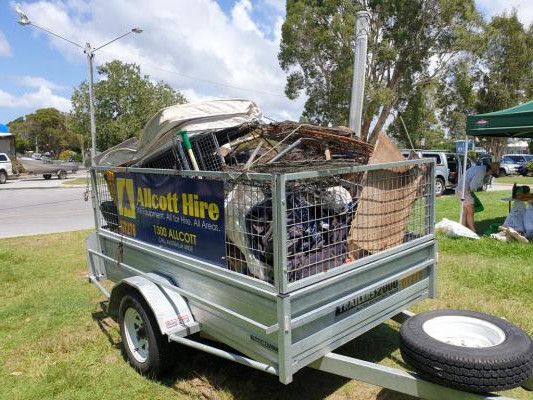By Margaret Maccoll
After four years auditing the annual clean up at the Noosa River a scientific analysis of results by NICA’s Peter Hunnam has shown the practice to be “inadequate“, stormwater drains are likely significant contributors of river rubbish and new strategies are needed to prevent rubbish reaching the river.
Noosa Council says identifying options to tackle littering will be one of the key items for the newly formed River Stakeholder Reference Group.
The River Rubbish Audit has focused on the lower Noosa River and riverside land at Tewantin where Peter and a team of volunteers found the 30 sackfuls of rubbish (3340 items) recovered this year had “not changed meaningfully“ over the four years “indicating little or no change in littering behaviours or control efforts“.
Peter, an environmental specialist, said the rubbish collected did not include microscopic soluble pollutants nor buried or drifting rubbish so was likely “only a fraction of the total rubbish“ contaminating the lower river.
“The persistent amounts of rubbish in lower Noosa River cannot be considered reasonable or acceptable,“ he said.
“This small Queensland coast river system is the heart of an iconic Biosphere Reserve, highly valued by the local community and integral to Noosa as a thriving eco-tourism destination.“
The rubbish was collected from about 4kms of river and riverfront land, wetlands and bushland in Tewantin from Ferry Park downstream along the River Esplanade, Lakeside Park, Ward Park, central Tewantin and RSL Parks and the Marina, to Hilton Esplanade and into Lake Doonella as well as around Pig (Makepeace), Sheep and Goat islands.
The audit found almost all of the 3340 items of rubbish recovered were “man-made, short-live consumer items“ that were dropped from someone’s hand, bag, boat or car with “concentrations around boat ramps, shore access and landing points“.
Peter said the results of this and previous audits showed “an unknown but possibly significant proportion of rubbish gets onto the shore and shallows from the stormwater outfalls that drain the road reserves and parks along the Tewantin and Noosaville riverside“.
“The old-fashioned designs are not “eco-friendly”, nor adapted to climate change impacts such as increased flooding and rising sea-levels; the concrete structures pipe run-off onto the shore, causing shore erosion, and into the river with no devices to filter, retain or ‘clean’ the water-borne materials – rubbish items, pollutants, soil and plant fragments, including weed seeds,“ he said.
In addition, urbanisation to the river’s edge in the form of roads, residential developments, parklands and canals provide little to no buffer to the river ecosystem and is a “root cause of the problem“.
“The results indicate carelessness or disregard in the local community about using and disposing of myriad items of “single-use” packaging and consumer items, and for the rubbish’s impacts on the Noosa river, its ecology, wildlife and amenity, for other river users,“ he said.
The impact of the lower river rubbish on the ecological health and natural amenity is wide ranging.
Peter said some rubbish will sink and permanently contaminate the river bed, some contains toxins that will poison susceptible plants and animals, some will accumulate on shorelines, smother the riverbed and impede river flow and some may be ingested and choke fish, birds or invertebrate animals.
The survey indicated that current efforts to manage the river rubbish problem are “inadequate“ and “it is not practical to try to “clean up” the rubbish once it is in the river system“.
“The ideal perhaps is to avoid generating or importing consumer materials destined to immediately become waste,“ he said.
A number of practical solutions have been put forward by the audit to prevent items from reaching the river.
The strategies include an education campaign for residents and visitors and riverside restoration in the form of riparian zones including mangroves and wetland gardens.
Peter said Council’s “ecologically-damaging“ stormwater drains needed conversion to become eco-friendly.
Once rubbish entry sources are blocked Peter suggests a major “one-off“ clean up as well as a regular rubbish audit as part of Noosa Biosphere monitoring.
Noosa Council’s environmental services manager Craig Doolan said the River Stakeholder Reference Group would look to get community feedback on a range of options such as stormwater runoff and better education initiatives.
Mr Doolan said litter capture devices on stormwater drains could be difficult to install and maintain.
“These have been tested previously and unless they are perfectly suited to the location, they tend to be ineffective,” he said.
“With community input, if we can find designs for our river that will work, council would be willing to conduct some trials.
“We all recognize that litter into the river just has to stop and that’s why council has implemented Plastic free events as part of its events policy.
“Hopefully we will start to see a reduction in plastic usage which will benefit the river and our waterways.“
Mr Doolan said council had developed a draft River Plan, which once endorsed would focus on a range of initiatives to tackle littering and potentially reduce pollutants escaping into the river.









